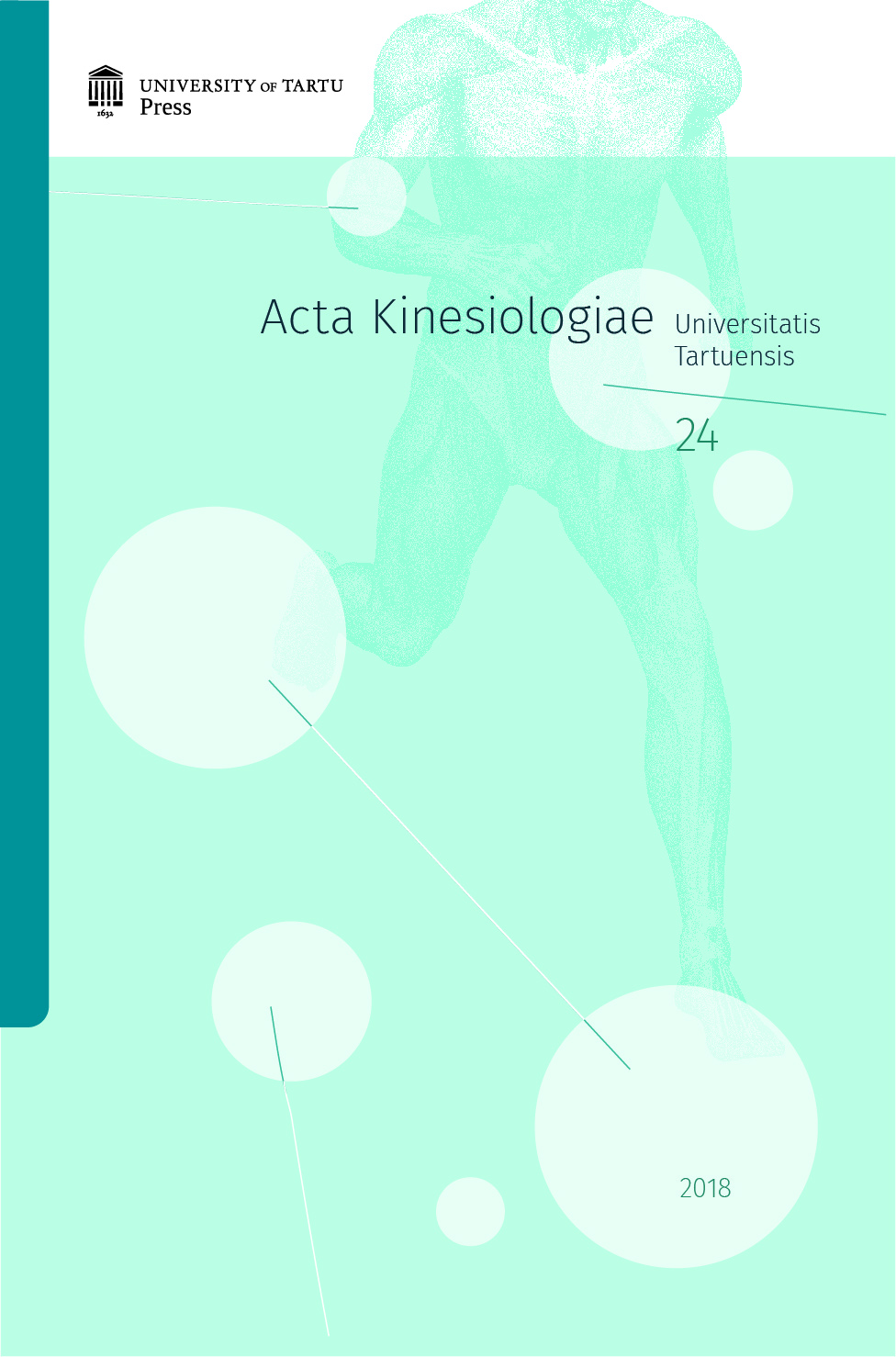The acute and post-activation potentiation effects of the SPEEDMAKER™ on step-by step kinematics, muscle activation and performance in 30-m sprints
DOI:
https://doi.org/10.12697/akut.2018.24.06Keywords:
resisted sprint, EMG, PAP, team male soccer playersAbstract
The purpose of this study was to examine the acute effects of using the SpeedMaker™ on step-by-step kinematics and muscle activity in 30-m sprints and if it is possible to elicit a post-activation potentiation stimulus with the SpeedMaker™ upon subsequent 30-m sprint performance. Thirteen male soccer players (age: 22.8±1.8 yr, body mass: 75.1±11.9 kg, height: 1.80±0.08 m) participated in a repeated measure and cross-over design consisting of two conditions: three normal 30-m sprints (control) and two normal 30-m sprints divided by one 30-m sprint with the SpeedMaker™ (intervention). Kinematics were measured for each step together with the peak muscle activity of the hamstrings, quadriceps and gluteus during each stride of each 30-m sprint. The main findings were that sprinting with the SpeedMaker™ increased sprint times by 1.7% compared to normal 30-m sprints. However, no occurrence of a postactivation potentiation (PAP) response was found when performing a 30-m sprint with the SpeedMaker™ prior to a normal 30-m sprint in male soccer players. Furthermore, no detectable differences in step-by-step analysis on kinematics and muscle activity were found between the sprints with and without the SpeedMaker™. Only hamstrings and gluteus activity increased per stride over 30-m. It was concluded that the SpeedMaker™ did influence sprint times, but only in a small way that kinematics and muscle activity did not change detectable. Furthermore, that the SpeedMaker™ did not elicit a PAP effect. In addition, increased hamstring and gluteus maximus activation during the 30-m sprints suggests that these muscles are very important for acceleration, and that it is likely that acute hamstring strains occur when a soccer player is close to maximal velocity, as hamstring activation is maximal at that point.


